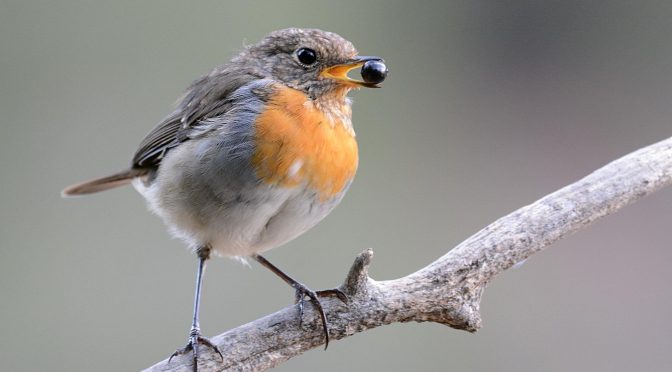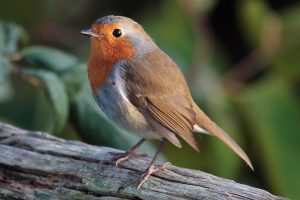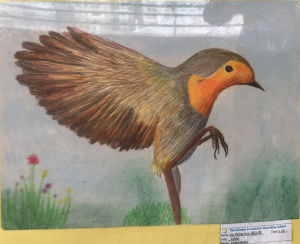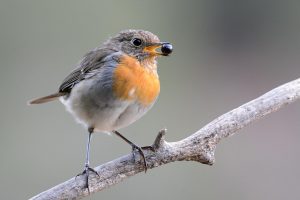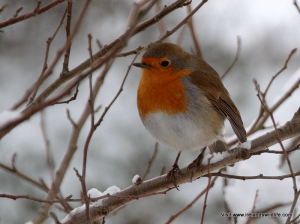| Common Name | (in English) European Robin |
| (in Chinese) 歐亞鴝、知更鳥 | |
| Scientific Name | (in Latin) Erithacus rubecula |
| Peculiar characteristics / external features: | The adult European robin is 12.5–14.0 cm (5.0–5.5 in) long and weighs 16–22 g (9/16–13/16 oz), with a wingspan of 20–22 cm (8–9 in). The male and female bear similar plumage; an orange breast and face (more strongly coloured in the otherwise similar British subspecies E. r. melophilus), lined by a bluish grey on the sides of the neck and chest. The upperparts are brownish, or olive-tinged in British birds, and the belly whitish, while the legs and feet are brown. The bill and eyes are black. Juveniles are a spotted brown and white in colouration, with patches of orange gradually appearing. |
| Distributions: | The robin occurs in Eurasia east to Western Siberia, south to Algeria and on the Atlantic islands as far west as the Azores and Madeira. It is a vagrant in Iceland. In the south-east, it reaches the Caucasus range. Irish and British robins are largely resident but a small minority, usually female, migrate to southern Europe during winter, a few as far as Spain. Scandinavian and Russian robins migrate to Britain and western Europe to escape the harsher winters. These migrants can be recognised by the greyer tone of the upper parts of their bodies and duller orange breast. The European robin prefers spruce woods in northern Europe, contrasting with its preference for parks and gardens in Ireland and Britain. |
| Habits: | |
| Dietary | The European Robin feeds mainly on insects and spiders, but also on fruits, berries and seeds during cold winters. It also consumes earth worms. |
| Reproductive (Solitary/Social/Territorial, Courtship Behavior, Taking care of youngs, etc) | The European Robin builds its nest a few metres above the ground, well hidden among the vegetation. It also may nest in cavity or crevice in a stone wall, but also in strange places such as letter-box or any pot in baked earth.
Female starts the construction in late March. The cup base is made with dry leaves and moss. The interior is lined with dry grasses and rootlets, hair and feathers. She usually lays 5 whitish eggs with dusky markings. Incubation lasts about 13 days, by female alone. During this period, she regularly leaves the nest for feeding. She is fed by the male. She broods the chicks at hatching and during the first week, while the male often brings food at nest. From the second week, the chicks are frequently fed by both parents. They abandon the nest about two weeks after hatching, and adults feed them for 15 days more. The female may start a second clutch, sometimes in the same nest, but often in a new nest. |
| Whatever appropriate | |
| Interesting Fact: | Male robins are noted for their highly aggressive territorial behaviour. They will fiercely attack other males and competitors that stray into their territories and have been observed attacking other small birds without apparent provocation. Such attacks sometimes lead to fatalities, accounting for up to 10% of adult robin deaths in some areas. |
Photos (at least 3):
References:
- http://www.oiseaux-birds.com/card-european-robin.html
- https://ww2.rspb.org.uk/community/wildlife/f/13609/t/8957.aspx
- http://bestforbirds.com/en/birds/14/european-robin
Voice of European Robin:
https://www.british-birdsongs.uk/european-robin/
Video:
